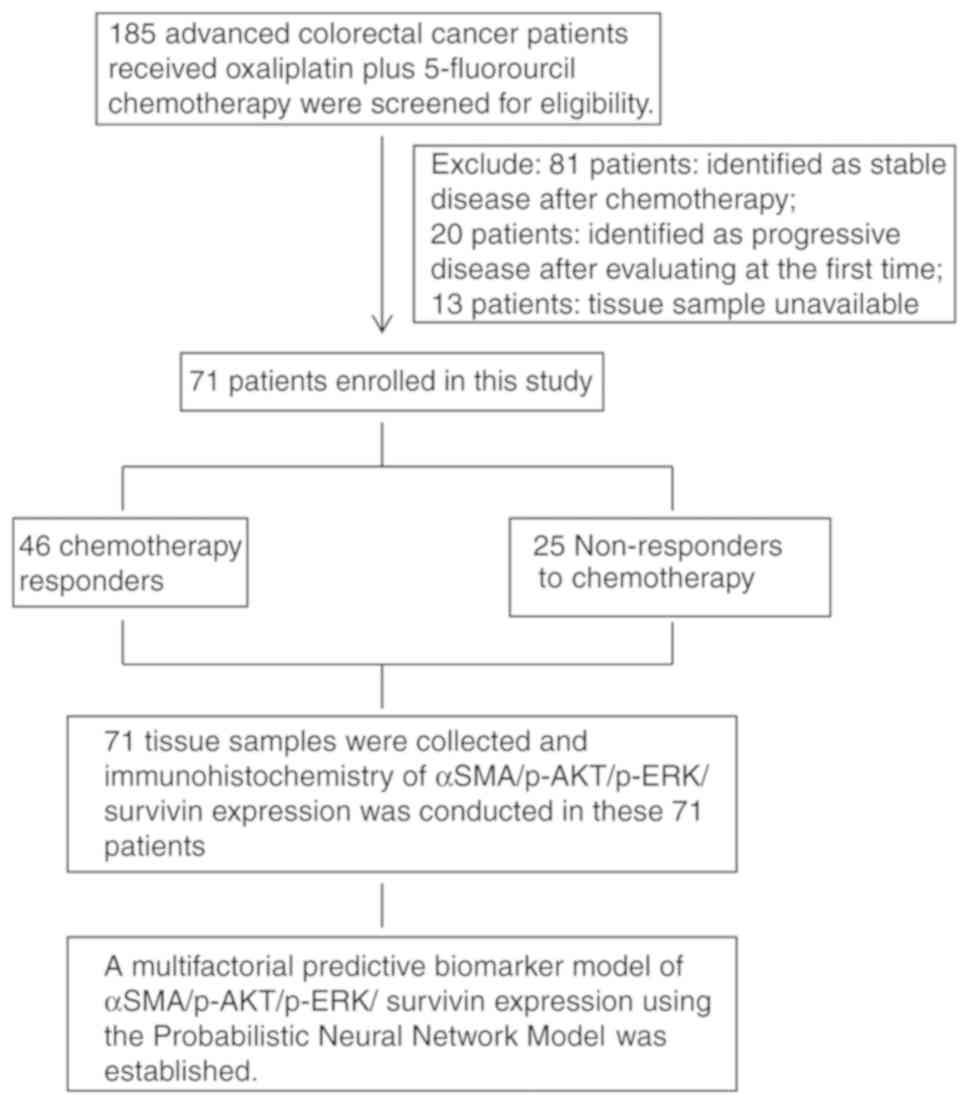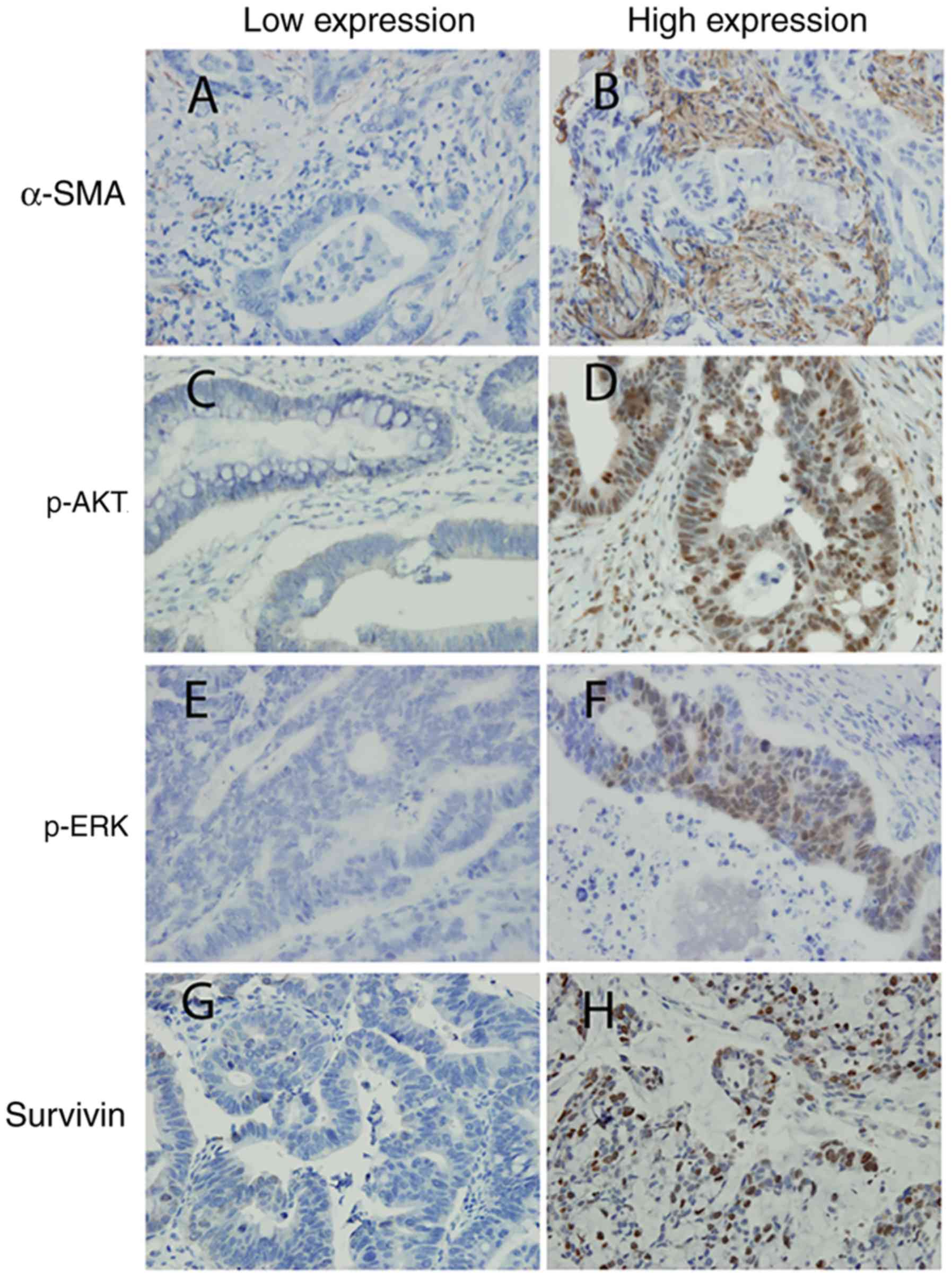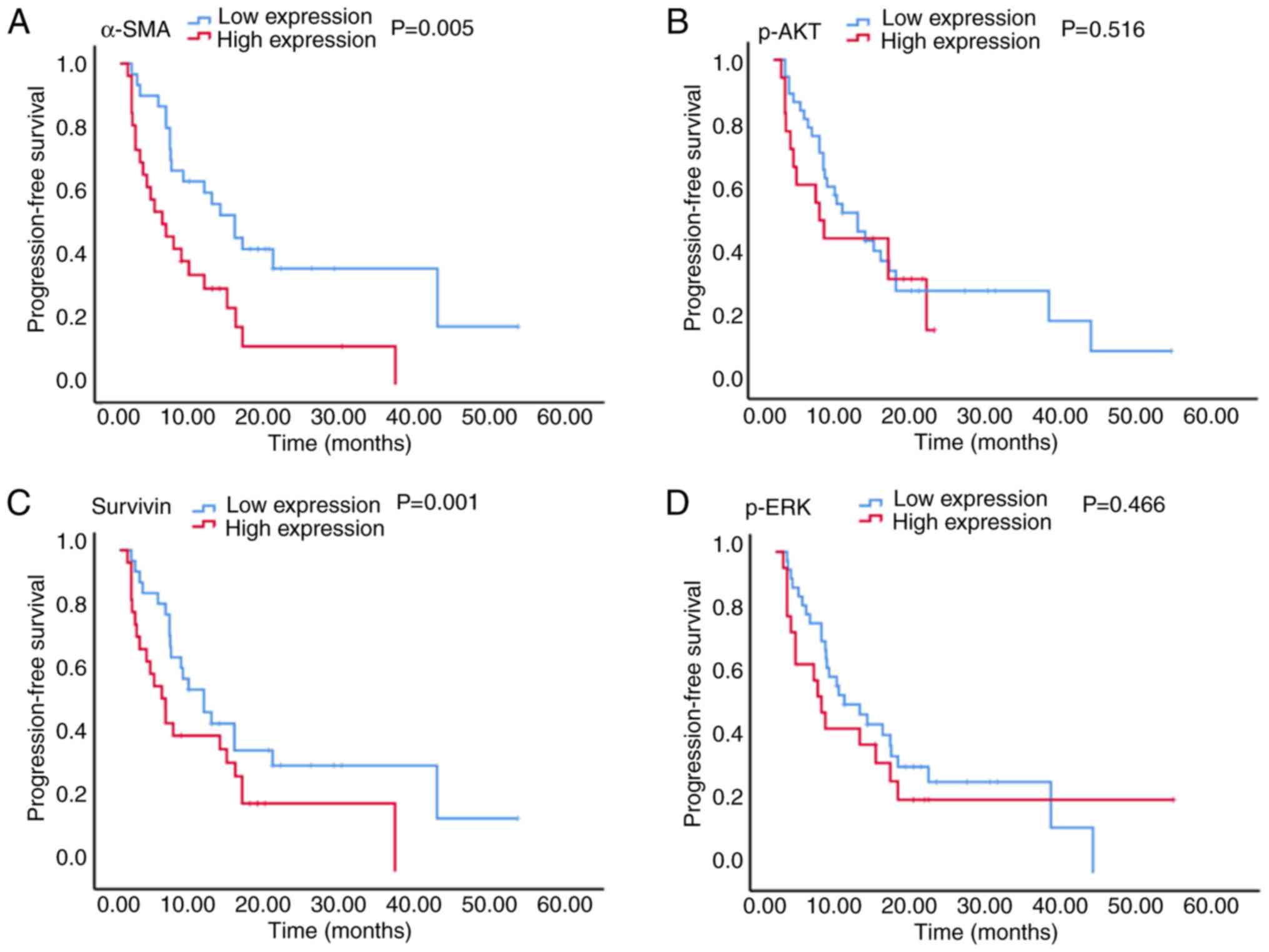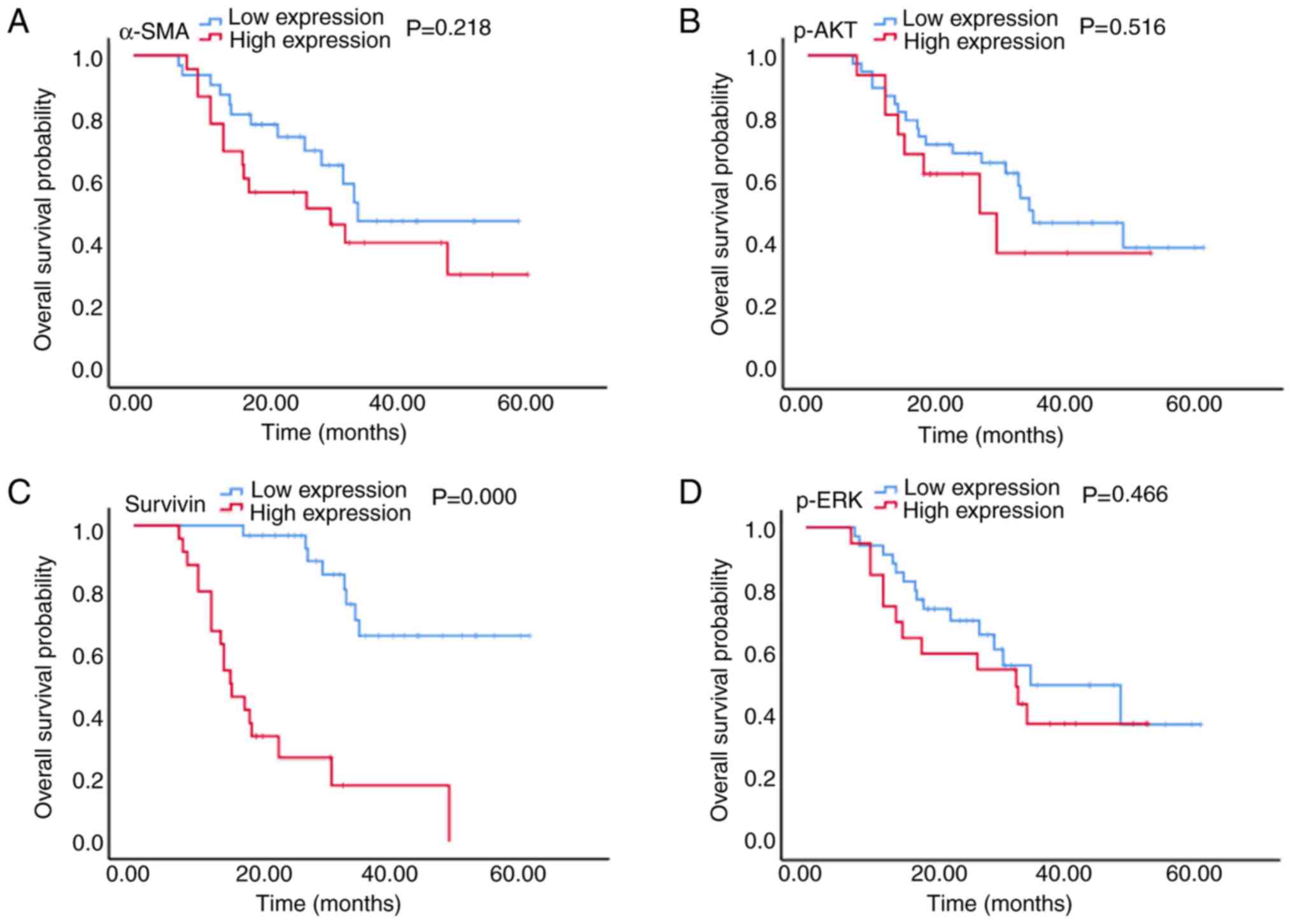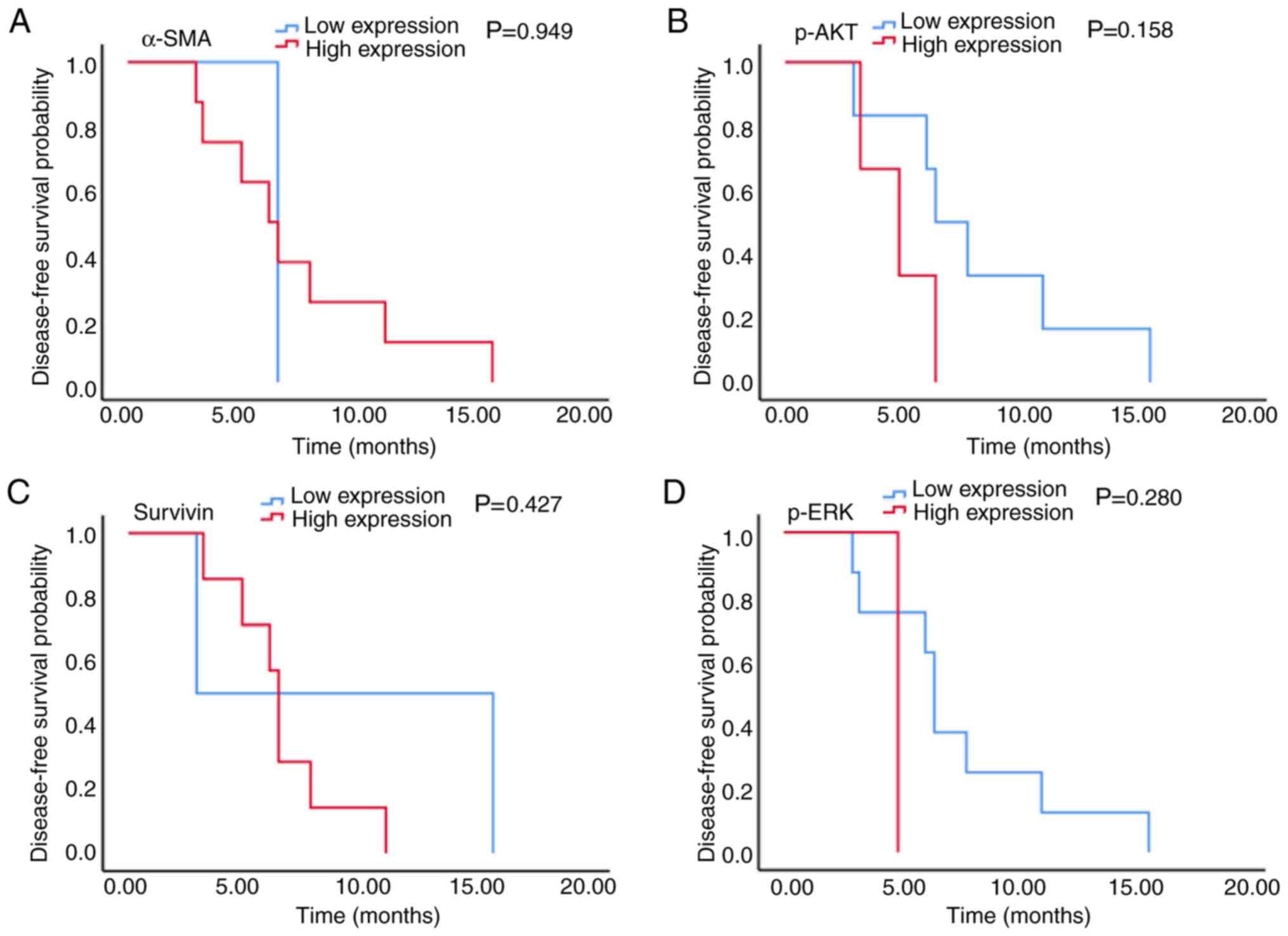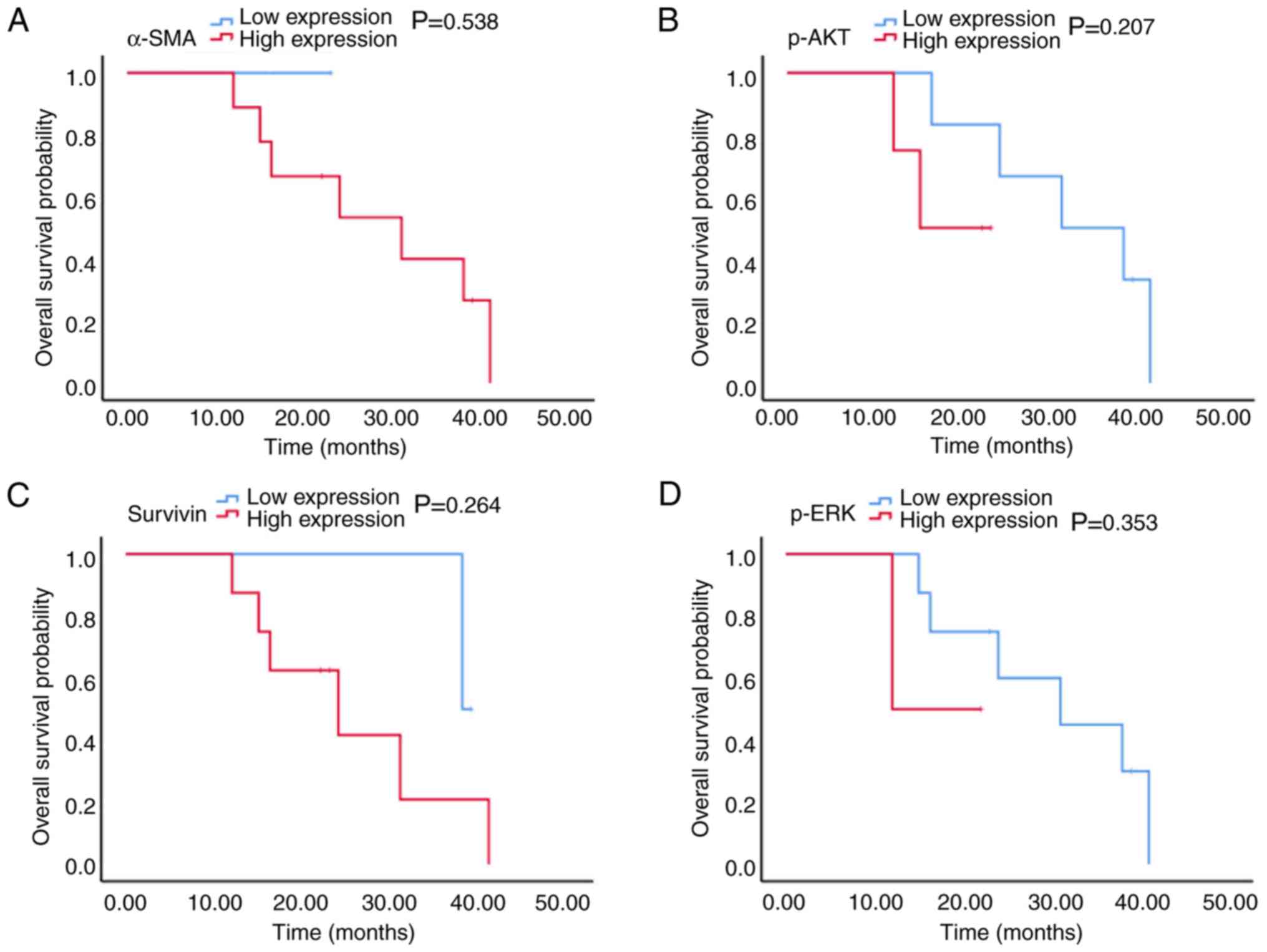|
1
|
Siegel RL, Miller KD and Jemal A: Cancer
statistics, 2015. CA Cancer J Clin. 65:5–29. 2015. View Article : Google Scholar : PubMed/NCBI
|
|
2
|
Kap EJ, Seibold P, Richter S, Scherer D,
Habermann N, Balavarca Y, Jansen L, Becker N, Pfütze K, Popanda O,
et al: Genetic variants in DNA repair genes as potential predictive
markers for oxaliplatin chemotherapy in colorectal cancer.
Pharmacogenomics J. 15:505–512. 2015. View Article : Google Scholar : PubMed/NCBI
|
|
3
|
Napolitano S, Martini G, Rinaldi B,
Martinelli E, Donniacuo M, Berrino L, Vitagliano D, Morgillo F,
Barra G, De Palma R, et al: Primary and acquired resistance of
colorectal cancer to anti-EGFR monoclonal antibody can be overcome
by combined treatment of regorafenib with cetuximab. Clin Cancer
Res. 21:2975–2983. 2015. View Article : Google Scholar : PubMed/NCBI
|
|
4
|
Ye F, Liu Z, Tan A, Liao M, Mo Z and Yang
X: XRCC1 and GSTP1 polymorphisms and prognosis of oxaliplatin-based
chemotherapy in colorectal cancer: A meta-analysis. Cancer
Chemother Pharmacol. 71:733–740. 2013. View Article : Google Scholar : PubMed/NCBI
|
|
5
|
Noda E, Maeda K, Inoue T, Fukunaga S,
Nagahara H, Shibutani M, Amano R, Nakata B, Tanaka H, Muguruma K,
et al: Predictive value of expression of ERCC 1 and GST-p for
5-fluorouracil/oxaliplatin chemotherapy in advanced colorectal
cancer. Hepatogastroenterology. 59:130–133. 2012. View Article : Google Scholar : PubMed/NCBI
|
|
6
|
Chen J, Xie F, Chen K, Wang D, Jiang H, Li
J, Pan F, Chen S, Zhang Y, Ruan Z, et al: ERCC5 promoter
polymorphisms at −763 and +25 predict the response to
oxaliplatin-based chemotherapy in patients with advanced colorectal
cancer. Cancer Biol Ther. 8:1424–1430. 2009. View Article : Google Scholar : PubMed/NCBI
|
|
7
|
Fariña-Sarasqueta A, van Lijnschoten G,
Rutten HJ and van den Brule AJ: Value of gene polymorphisms as
markers of 5-FU therapy response in stage III colon carcinoma: A
pilot study. Cancer Chemother Pharmacol. 66:1167–1171. 2010.
View Article : Google Scholar : PubMed/NCBI
|
|
8
|
Li S, Lu X, Chi P and Pan J:
Identification of Nkx2-3 and TGFB1I1 expression levels as potential
biomarkers to predict the effects of FOLFOX4 chemotherapy. Cancer
Biol Ther. 13:443–449. 2012. View Article : Google Scholar : PubMed/NCBI
|
|
9
|
Li S, Lu X, Chi P and Pan J:
Identification of HOXB8 and KLK11 expression levels as potential
biomarkers to predict the effects of FOLFOX4 chemotherapy. Future
Oncol. 9:727–736. 2013. View Article : Google Scholar : PubMed/NCBI
|
|
10
|
Schetter AJ, Leung SY, Sohn JJ, Zanetti
KA, Bowman ED, Yanaihara N, Yuen ST, Chan TL, Kwong DL, Au GK, et
al: MicroRNA expression profiles associated with prognosis and
therapeutic outcome in colon adenocarcinoma. JAMA. 299:425–436.
2008. View Article : Google Scholar : PubMed/NCBI
|
|
11
|
Gonçalves-Ribeiro S, Díaz-Maroto NG,
Berdiel-Acer M, Soriano A, Guardiola J, Martínez-Villacampa M,
Salazar R, Capellà G, Villanueva A, Martínez-Balibrea E and Molleví
DG: Carcinoma-associated fibroblasts affect sensitivity to
oxaliplatin and 5FU in colorectal cancer cells. Oncotarget.
7:59766–59780. 2016. View Article : Google Scholar : PubMed/NCBI
|
|
12
|
West KA, Castillo SS and Dennis PA:
Activation of the PI3K/Akt pathway and chemotherapeutic resistance.
Drug Resist Update. 5:234–248. 2002. View Article : Google Scholar
|
|
13
|
McCubrey JA, Steelman LS, Chappell WH,
Abrams SL, Wong EW, Chang F, Lehmann B, Terrian DM, Milella M,
Tafuri A, et al: Roles of the RAF/MEK/ERK pathway in cell growth,
malignant transformation and drug resistance. Biochim Biophys Acta.
1773:1263–1284. 2007. View Article : Google Scholar : PubMed/NCBI
|
|
14
|
Pritchard AL and Hayward NK: Molecular
pathways: mitogen-activated protein kinase pathway mutations and
drug resistance. Clin Cancer Res. 19:2301–2309. 2013. View Article : Google Scholar : PubMed/NCBI
|
|
15
|
Zhao H, Zhao D, Jin H, Li H, Yang X,
Zhuang L and Liu T: Bufalin reverses intrinsic and acquired drug
resistance to cisplatin through the AKT signaling pathway in
gastric cancer cells. Mol Med Rep. 14:1817–1822. 2016. View Article : Google Scholar : PubMed/NCBI
|
|
16
|
LoPiccolo J, Blumenthal GM, Bernstein WB
and Dennis PA: Targeting the PI3K/Akt/mTOR pathway: Effective
combinations and clinical considerations. Drug Resist Updat.
11:32–50. 2008. View Article : Google Scholar : PubMed/NCBI
|
|
17
|
Sun L, Liu L, Liu X, Wang Y, Li M, Yao L,
Yang J, Ji G, Guo C, Pan Y, et al: MGr1-Ag⁄37LRP induces cell
adhesion-mediated drug resistance through FAK⁄PI3K and MAPK pathway
in gastric cancer. Cancer Sci. 105:651–659. 2014. View Article : Google Scholar : PubMed/NCBI
|
|
18
|
Jin W, Wu L, Liang K, Liu B, Lu Y and Fan
Z: Roles of the PI-3K and MEK pathways in Ras-mediated
chemoresistance in breast cancer cells. Br J Cancer. 89:185–191.
2003. View Article : Google Scholar : PubMed/NCBI
|
|
19
|
Nam K, Son SH, Oh S, Jeon D, Kim H, Noh
DY, Kim S and Shin I: Binding of galectin-1 to integrin β1
potentiates drug resistance by promoting survivin expression in
breast cancer cells. Oncotarget. 8:35804–35823. 2017. View Article : Google Scholar : PubMed/NCBI
|
|
20
|
Hari DM, Leung AM, Lee JH, Sim MS, Vuong
B, Chiu CG and Bilchik AJ: AJCC Cancer Staging Manual 7th edition
staging criteria for colon cancer: do the complex modifications
improve prognostic assessment? J Am Coll Surg. 217:181–190. 2013.
View Article : Google Scholar : PubMed/NCBI
|
|
21
|
Benson AB III, Venook AP, Cederquist L,
Chan E, Chen YJ, Cooper HS, Deming D, Engstrom PF, Enzinger PC,
Fichera A, et al: Colon cancer, version 1.2017,NCCN clinical
practice guidelines in oncology. J Natl Compr Canc Netw.
15:370–398. 2017. View Article : Google Scholar : PubMed/NCBI
|
|
22
|
Eisenhauer EA, Therasse P, Bogaerts J,
Schwartz LH, Sargent D, Ford R, Dancey J, Arbuck S, Gwyther S,
Mooney M, et al: New response evaluation criteria in solid tumours:
Revised RECIST guideline (version 1.1). Eur J Cancer. 45:228–247.
2009. View Article : Google Scholar : PubMed/NCBI
|
|
23
|
Cai J, Guan H, Fang L, Yang Y, Zhu X, Yuan
J, Wu J and Li M: MicroRNA-374a activates Wnt/β-catenin signaling
to promote breast cancer metastasis. J Clin Invest. 12:566–579.
2013.
|
|
24
|
Spech DF: Probabilistic neural networks.
Neural Networks. 3:109–118. 1990. View Article : Google Scholar
|
|
25
|
Mueller MM and Fusenig NE: Friends or
foes-bipolar effects of the tumour stroma in cancer. Nat Rev
Cancer. 4:839–849. 2004. View
Article : Google Scholar : PubMed/NCBI
|
|
26
|
Paget S: The distribution of secondary
growths in cancer of the breast. 1989. Cancer Metastasis Rev.
8:98–101. 1889.
|
|
27
|
Mei L, Du W and Ma WW: Targeting stromal
microenvironment in pancreatic ductal adenocarcinoma: Controversies
and promises. J Gastrointest Oncol. 7:487–494. 2016. View Article : Google Scholar : PubMed/NCBI
|
|
28
|
Rachel JB and Sun YO: Breast
cancer-associated fibroblasts: Where we are and where we need to
go. Cancers (Basel). 8(pii): E192016.PubMed/NCBI
|
|
29
|
Nagasaki T, Hara M, Nakanishi H, Takahashi
H, Sato M and Takeyama H: Interleukin-6 released by colon
cancer-associated fibroblasts is critical for tumour angiogenesis:
Anti-interleukin-6 receptor antibody suppressed angiogenesis and
inhibited tumour-stroma interaction. Br J Cancer. 110:469–478.
2014. View Article : Google Scholar : PubMed/NCBI
|
|
30
|
Goncalves-Ribeiro S, Sanz-Pamplona R,
Vidal A, Sanjuan X, Guillen Díaz-Maroto N, Soriano A, Guardiola J,
Albert N, Matinez-Villacampa M, Lopez I, et al: Prediction of
pathological response to neoadjuvant treatment in rectal cancer
with a two-protein immunohistochemical score derived from stromal
gene-profiling. Ann Oncol. 28:2160–2168. 2017. View Article : Google Scholar : PubMed/NCBI
|
|
31
|
Loeffler M, Krüger JA, Niethammer AG and
Reisfeld RA: Targeting tumor-associated fibroblasts improves cancer
chemotherapy by increasing intratumoral drug uptake. J Clin Invest.
116:1955–1962. 2006. View
Article : Google Scholar : PubMed/NCBI
|
|
32
|
Mao Y, Keller ET, Garfield DH, Shen K and
Wang J: Stromal cells in tumor microenvironment and breast cancer.
Cancer Metastasis Rev. 32:303–315. 2013. View Article : Google Scholar : PubMed/NCBI
|
|
33
|
Lotti F, Jarrar AM, Pai RK, Hitomi M,
Lathia J, Mace A, Gantt GA Jr, Sukhdeo K, DeVecchio J, Vasanji A,
et al: Chemotherapy activates cancer-associated fibroblasts to
maintain colorectal cancer-initiating cells by IL-17A. J Exp Med.
210:2851–2872. 2013. View Article : Google Scholar : PubMed/NCBI
|
|
34
|
Das Thakur M and Stuart DD: Molecular
pathways: Response and resistance to BRAF and MEK inhibitors in
BRAF(V600E) tumors. Clin Cancer Res. 20:1074–1080. 2014. View Article : Google Scholar : PubMed/NCBI
|
|
35
|
Chen J, Shao R, Li F, Monteiro M, Liu JP,
Xu ZP and Gu W: PI3K/Akt/mTOR pathway dual inhibitor BEZ235
suppresses the stemness of colon cancer stem cells. Clin Exp
Pharmacol Physiol. 42:1317–1326. 2015. View Article : Google Scholar : PubMed/NCBI
|
|
36
|
Xu J, Zhang SR, Wang R, Wu X, Zeng L and
Fu Z: Knockdown of PRDX2 sensitizes colon cancer cells to 5-FU by
suppressing the PI3K/AKT signaling pathway. Biosci Rep. 37(pii):
BSR201604472017. View Article : Google Scholar : PubMed/NCBI
|
|
37
|
Danielsen SA, Eide PW, Nesbakken A, Guren
T, Leithe E and Lothe RA: Portrait of the PI3K/AKT pathway in
colorectal cancer. Biochim Biophys Acta. 1855:104–121.
2015.PubMed/NCBI
|
|
38
|
Cheung CH, Huang CC, Tsai FY, Lee JY,
Cheng SM, Chang YC, Huang YC, Chen SH and Chang JY:
Survivin-biology and potential as a thera-peutic target in
oncology. Onco Targets Ther. 6:1453–1462. 2013. View Article : Google Scholar : PubMed/NCBI
|
|
39
|
Zaffaroni N and Daidone MG: Survivin
expression and resistance to anticancer treatments: Perspectives
for new therapeutic interventions. Drug Resist Updat. 5:65–72.
2002. View Article : Google Scholar : PubMed/NCBI
|
|
40
|
Coumar MS, Tsai FY, Kanwar JR, Sarvagalla
S and Cheung CH: Treat cancers by targeting survivin: Just a dream
or future reality? Cancer Treat Rev. 39:802–811. 2013. View Article : Google Scholar : PubMed/NCBI
|
|
41
|
Li F, Yang J, Ramnath N, Javle MM and Tan
D: Nuclear or cytoplasmic expression of survivin: What is the
significance? Int J Cancer. 114:509–512. 2005. View Article : Google Scholar : PubMed/NCBI
|
|
42
|
Jiang G, Ren B, Xu L, Song S, Zhu C and Ye
F: Survivin may enhance DNA double-strand break repair capability
by up-regulating Ku70 in human KB cells. Anticancer Res.
29:223–228. 2009.PubMed/NCBI
|
|
43
|
Shin S, Sung BJ, Cho YS, Kim HJ, Ha NC,
Hwang JI, Chung CW, Jung YK and Oh BH: An anti-apoptotic protein
human survivin is a direct inhibitor of caspase-3 and −7.
Biochemistry. 40:1117–1123. 2001. View Article : Google Scholar : PubMed/NCBI
|
|
44
|
Zhuo W, Zhang L, Zhu Y, Zhu B and Chen Z:
Fisetin, a dietary bioflavonoid, reverses acquired
Cisplatin-resistance of lung adenocarcinoma cells through
MAPK/Survivin/Caspase pathway. Am J Transl Res. 7:2045–2052.
2015.PubMed/NCBI
|
|
45
|
Tsubaki M, Takeda T, Ogawa N, Sakamoto K,
Shimaoka H, Fujita A, Itoh T, Imano M, Ishizaka T, Satou T and
Nishida S: Overexpression of survivin via activation of ERK1/2,
Akt, and NF-kB plays a central role in vincristine resistance in
multiple myeloma cells. Leuk Res. 39:445–452. 2015. View Article : Google Scholar : PubMed/NCBI
|
|
46
|
Zhang Y, Chen HX, Zhou SY, Wang SX, Zheng
K, Xu DD, Liu YT, Wang XY, Wang X, Yan HZ, et al: Sp1 and c-Myc
modulate drug resistance of leukemia stem cells by regulating
survivin expression through the ERK-MSK MAPK signaling pathway. Mol
Cancer. 14:562015. View Article : Google Scholar : PubMed/NCBI
|















